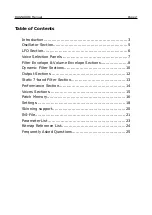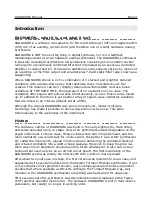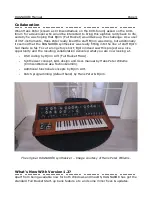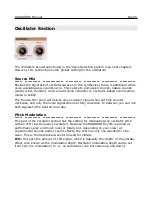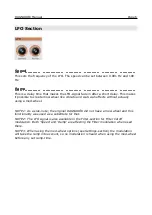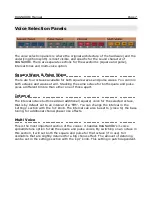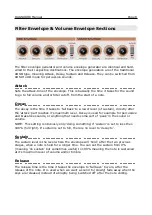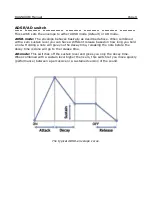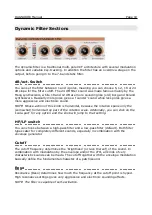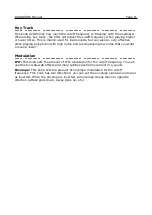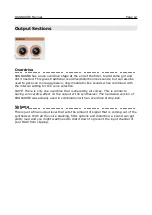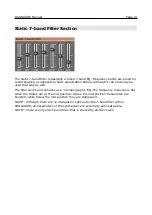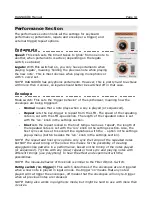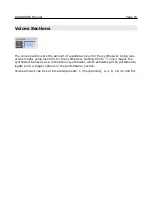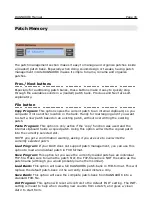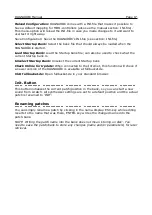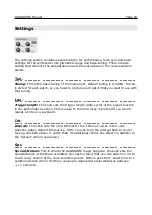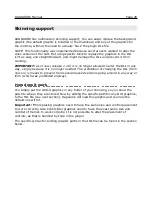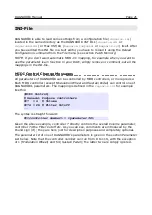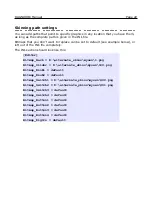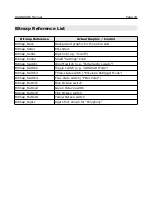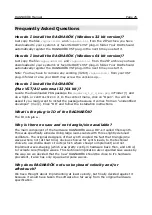
RAGNARÖK
Manual
Page 10
Dynamic Filter Sections
The dynamic filter is a traditional multi-pole VCF architecture with several modulation
options and variable key-tracking. In addition the filter has an overdrive-stage on the
output, before going in to the 7-band static filter.
dB/oct. Switch
You can set the filter between 1 and 4 poles, meaning you can choose 6, 12, 18 or 24
dB slope for the filter cutoff. The 24 dB filter sound was made famous mainly by the
Moog synthesizers, while 18 and 12 dB are more sounding like (old) Korg and Roland
synthesizers. Basically more poles gives a 'rounder' sound while less poles gives a
more aggressive and electronic sound.
NOTE: Mouse-action of this knob is horizontal, because the rotation spans only the
(somewhat) horizontal top part of the rotation scale. Addionally, you can click on the
'scale-part' for any option and the knob will jump to that setting.
HP/LP switch
You can choose between a high-pass filter and a low-pass filter (default). Both filter
types cater for completely different sounds, especially in combination with the
envelope generator.
Cutoff
The cutoff frequency determines the 'brightness' (or lack thereof) of the sound. In
combination with modulation by the envelope and/or the LFO, all kinds of very
characteristic sounds can be made. The cutoff together with the envelope modulation
basically define the fundamental character of a patch/sound.
Reso
Resonance (Reso) determines how much the frequency at the cutoff point is hyped.
High resonance settings gives very aggressive and electronic sounding effects.
NOTE: The filter is capable of self-oscillation.


